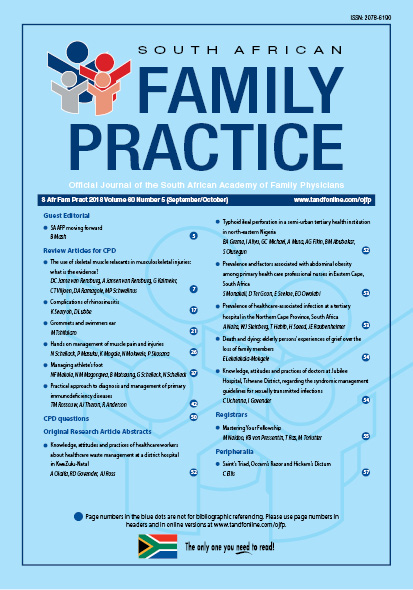Hands on management of muscle pain and injuries
Abstract
Sport injuries and muscle pain can occur as a result of engagement in exercise and or organised sporting activities. These injuries affect all age groups and gender. The most common types of sporting activities known to cause these injuries include jogging, cycling, volley ball, swimming and heavy weight lifting. Lack of warming-up before participating in sporting activity, overtraining and or excessive exposure to these physical activities may increase the risk of injury. These factors are categorised as extrinsic factors. Intrinsic factors that may lead to sport injuries or may precipitate these injuries are age, previous injuries and level of flexibility. The most common type of injuries seen are sprains and strains. These injuries are accompanied by pain, swelling and redness of the injured area. Non-pharmacological and pharmacological management is available for the effective management of these injuries. Pain may vary from mild to severe depending on the severity of injury. These varying types of pain can be managed optimally using non-narcotics, such as paracetamol, and non-steroidal anti-inflammatory (NSAIDs), like ibuprofen. Topical therapies of NSAIDs such as ibuprofen, diclofenac and flurbiprofen are often highly effective for managing sports-related muscle sprains and strains.
When pain is categorised as moderate to severe, narcotics may be prescribed and administered.

